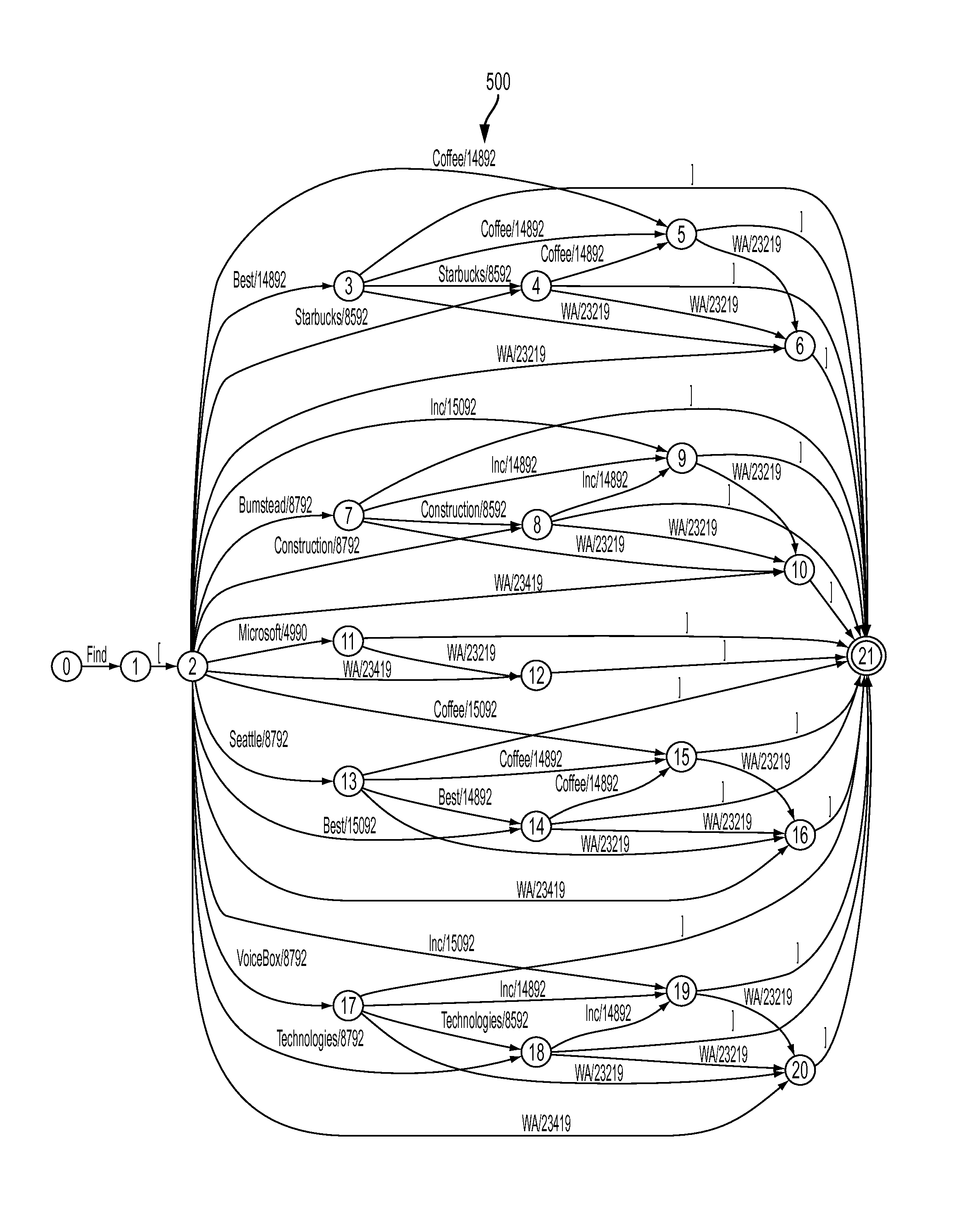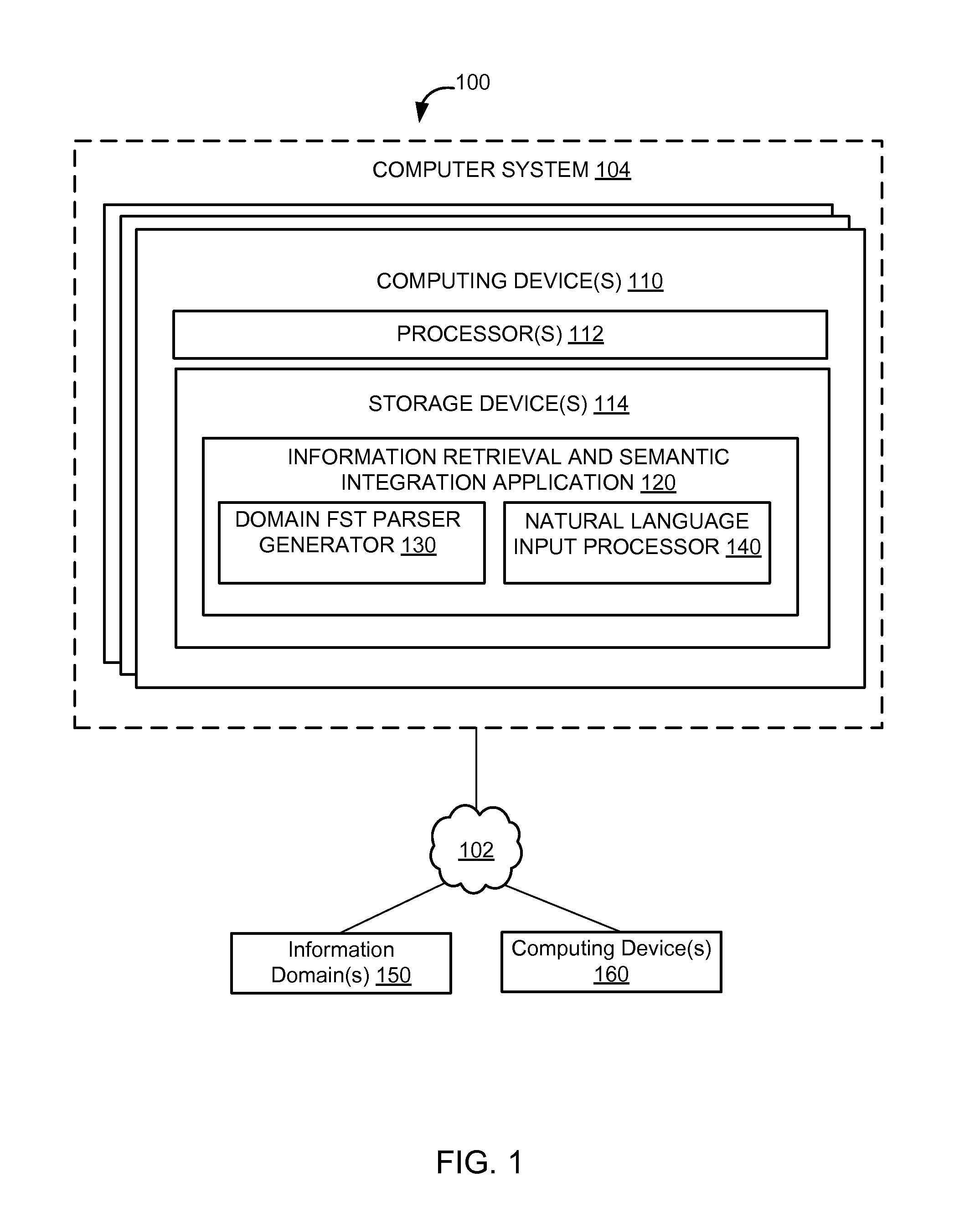Integration of domain information into state transitions of a finite state transducer for natural language processing
a finite state transducer and domain information technology, applied in the field of integration of domain information into state transitions of finite state transducers for natural language processing, can solve the problems of inefficient conventional semantic parsers at disambiguating a potential meaning of an nl input, conventional semantic parsers typically have sub-optimal matching capabilities, and achieve accurate alignment with the user
- Summary
- Abstract
- Description
- Claims
- Application Information
AI Technical Summary
Benefits of technology
Problems solved by technology
Method used
Image
Examples
Embodiment Construction
[0047]FIG. 1 illustrates a system 100 of integrating domain information into state transitions of a Finite State Transducer for natural language processing, according to an implementation of the invention. A system may integrate semantic parsing and information retrieval from an information domain to generate an FST parser that represents the information domain. The FST parser may include a plurality of FST paths, at least one of which may be used to generate a meaning representation from a natural language input (e.g., natural language utterance and / or other natural language input).
[0048]The meaning representation may be used to execute an action (e.g., a search, a command, and / or other action) related to an information domain. As such, in an implementation, the meaning representation is not necessarily a search result itself, but rather a semantically parsed translation of a natural language input that uses domain information to help understand the intent of the natural language i...
PUM
 Login to View More
Login to View More Abstract
Description
Claims
Application Information
 Login to View More
Login to View More - R&D
- Intellectual Property
- Life Sciences
- Materials
- Tech Scout
- Unparalleled Data Quality
- Higher Quality Content
- 60% Fewer Hallucinations
Browse by: Latest US Patents, China's latest patents, Technical Efficacy Thesaurus, Application Domain, Technology Topic, Popular Technical Reports.
© 2025 PatSnap. All rights reserved.Legal|Privacy policy|Modern Slavery Act Transparency Statement|Sitemap|About US| Contact US: help@patsnap.com



